Highway Expansion Threatens Historically Significant Glen at National Park Seminary
The National Park Seminary, a 23-acre site in Forest Glen, MD, just north of Washington, D.C., was first developed in the late 19th century as a resort, before becoming a girls school, then a rehabilitation center for wounded soldiers and now as a residential complex. It includes the Glen, a wooded landscape that encompasses some thirteen acres. Listed in the National Register of Historic Places in 1972, portions of the site could be lost to a highway expansion project, which could be the tipping point for this cultural landscape already challenged by diminished maintenance and ecological degradation.
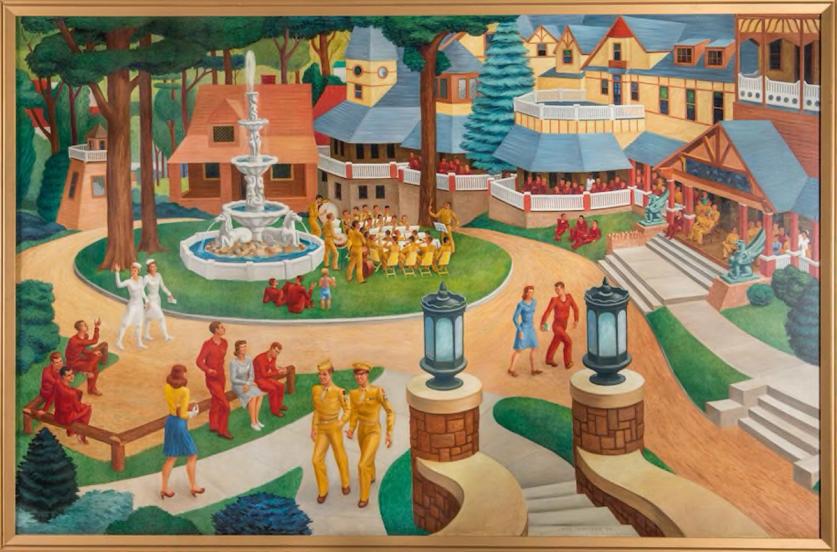
Background
The Glen at National Park Seminary is an architecturally and historically significant cultural landscape. The National Park Seminary (Seminary) site was originally developed as a resort hotel called Ye Forest Inne in 1887. It is yet unknown what presence Native people may have had at the site during preceding millennia. When the resort failed, the Seminary was established as an elite school for young women in 1894 and was expanded over the years both north and south of the present extent of the site. Designed landscape features include rustic woodlands, paths, stone walls, statuary, stone footbridges, statuary dating from the late 1910s and follies such as a Spring and a Grotto. There is a more formal garden near the Italianate Villa, with its Justice Court and Villa Gardens featuring a large statue, stone basin, and staircases. At present, the identity of the designer(s) involved has yet to be determined. As noted in a 2006 New York Times article, the architectural features include a Japanese pagoda, a Swiss chalet, “a Dutch windmill, a Spanish mission-style home, an American bungalow and an Italian villa.” A panoramic 1927 painting of the approach to the Seminary from the train station to the north shows the Glen as a delightful park welcoming everyone to the campus and providing a respite from the workaday world.
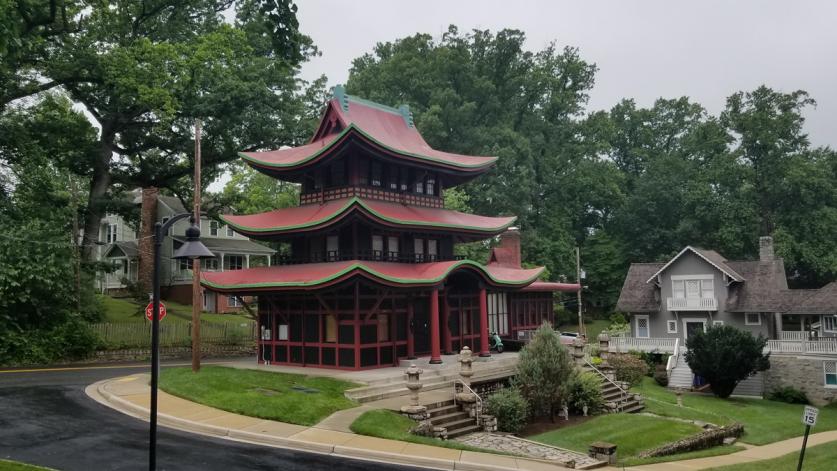
The landscape’s natural features themselves are emblematic of the Maryland Piedmont: steep wooded slopes populated with native oaks, beech, hickory, and tulip poplar leading to a bifurcated stream below. Adorned with rocks and boulders, the stream is a tributary of Rock Creek, the same creek that is the defining feature of nearby Rock Creek Park.
In 1942, the Seminary was commandeered by the U.S. Army as a rehabilitation center for soldiers injured during World War II, a role it continued to serve for combat veterans from the Korean and Vietnam wars. Construction of the I-495 Capital Beltway from 1961 to 1964 had the single biggest impact on the landscape of the Glen, wiping away all historic features on open uplands north of the wooded stream valley. In 1972, Hurricane Agnes destroyed several stone bridges and altered the course of the Glen stream.
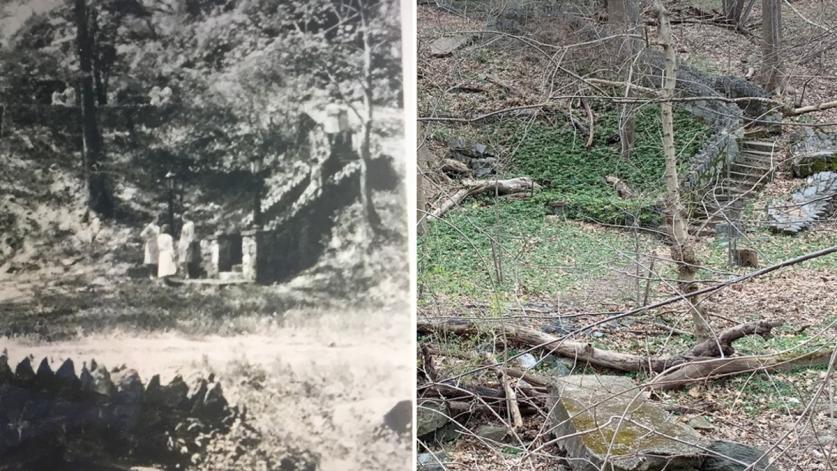
Thanks to efforts by the Maryland Historical Trust (MHT), National Park Seminary was listed in the National Register of Historic Places in 1972, with its period of significance established as 1894-1930 (although the school was in operation until 1942). The Seminary is also listed in the Maryland Inventory of Historic Properties and is protected by a historic preservation easement granted to the Maryland Historical Trust. The local jurisdiction, Montgomery County, has included the Seminary in its Master Plan for Historic Preservation.
The 1972 NRHP Statement of Significance stated that “the 23 acres of wooded land [of the entire historic district, including the Glen] create a rural vista in the midst of congested, suburban Washington. Seminary grounds offer welcome open space and lend an air of bucolic dignity.” Despite the formal recognition of the Seminary’s historic significance, from the late 1970s to the late 1980s the Army neglected the large Glen area of the Walter Reed Hospital Annex, until the Save Our Seminary (SOS) non-profit organization was incorporated in 1989 and its volunteers initiated preservation efforts. During the past three decades almost all the historic Seminary buildings have been restored and converted into private residences. The Glen landscape, however, is now so badly deteriorated that if remaining historic features such as the Grand Staircase, the Grotto, and the bridge to the Spring are not stabilized soon, they will be lost along with the stone bridges and paths that are now gone.
Threat
The most urgent threat is the expansion of I-495, the Capital Beltway that encircles Washington, D.C., which is a high priority of Maryland Governor Larry Hogan. A June 2020 Draft Environmental Impact Statement and appendix detail the adverse effects on the Glen. Among others, the expansion would seize portions of the Glen on its western, northern, and eastern boundaries, exacerbate problems with invasive species and destroy historic designed features including cisterns, a stone retaining wall, the earliest bridge abutment, stone walking paths and others.
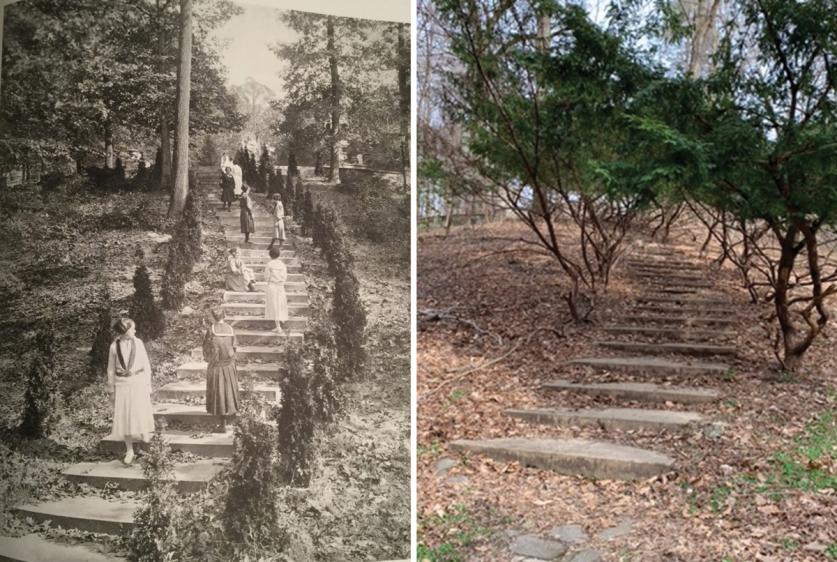
But, even without that prospect, the Glen is in dire need of ecological restoration and historic preservation. The decline is the result of a combination of erosion, neglect, and age. Stormwater runoff feeds into the stream that flows through the Glen, polluting the waters, degrading aquatic habitat, and eroding soils and stream banks. To the north, the adjacent I-495 Beltway in it current configuration contributes additional air, water, and noise pollution. Erosion on the slopes has seriously destabilized the sidewalk and Grand Staircase, the main entrance leading into the Glen. Unbridled natural processes have damaged the pedestrian walkways so that using them can be treacherous. Small stone bridges have partially collapsed. In short, the majority of the character-defining man-made features require rehabilitation. Lately, incidences of vandalism have increased.
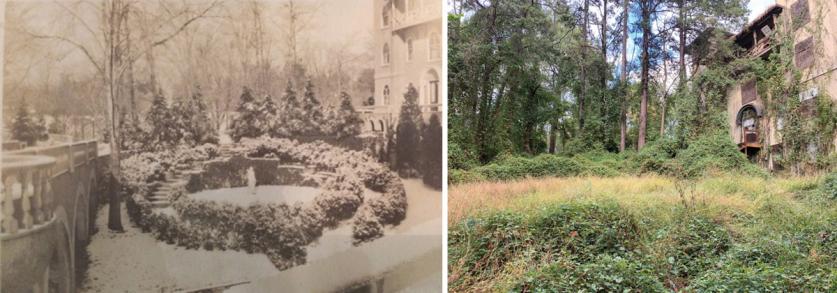
The natural features also require intervention. Although protected by a conservation easement, the landscape suffers from the same assaults as other natural areas: aggressive invasions of non-native plants, which displace native species, combined with an over-abundance of deer with grazing habits that often facilitate the spread of invasives. The result is a depleted woodland that would greatly benefit from improved ecology. The prospect of a highway expansion means the Glen is now at a tipping point.
What You Can Do To Help
Support Save Our Seminary at Forest Glen Inc. (SOS), the Silver Spring, MDA-based nonprofit membership organization incorporated in 1989 to marshal public and private support to preserve the National Park Seminary Historic District and communicate its history.
Contact state officials and express opposition to using the Glen at National Park Seminary as part of the I-495 & I-270 Managed Lanes expansion program:



